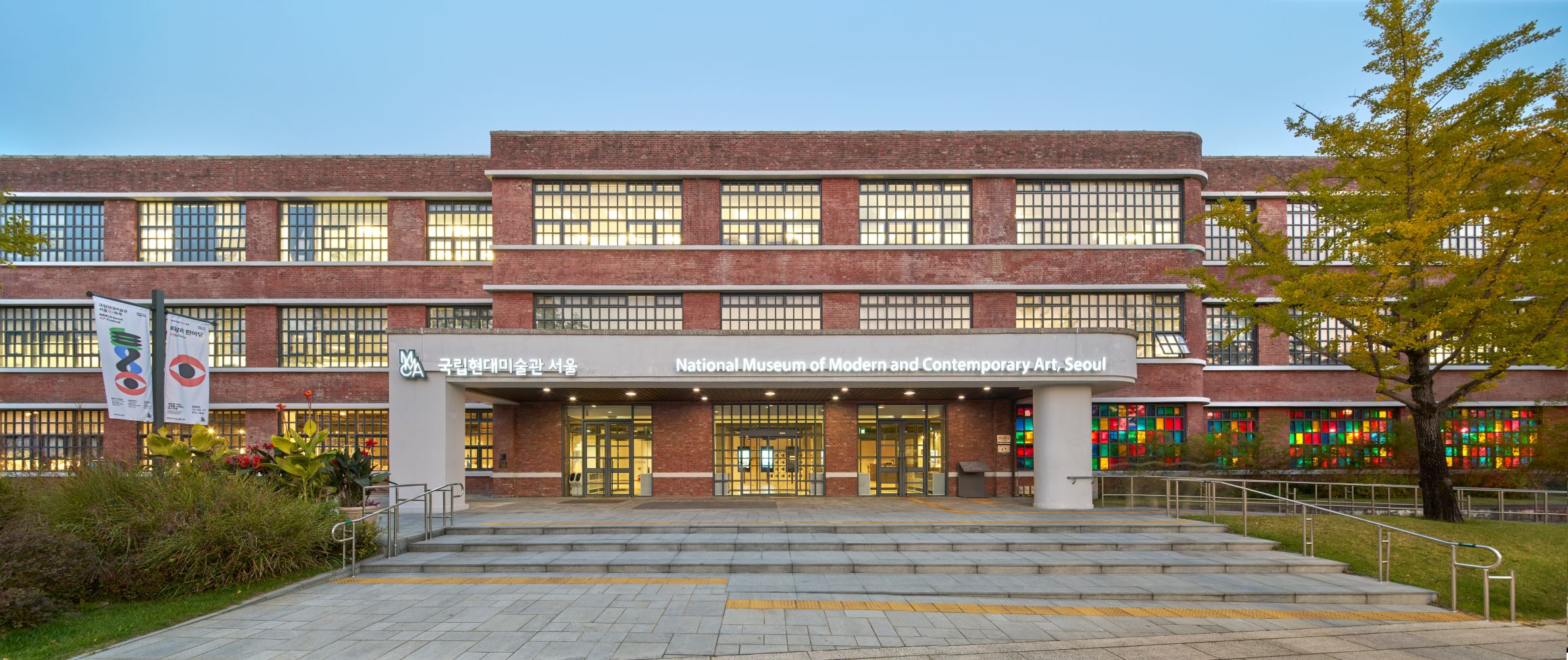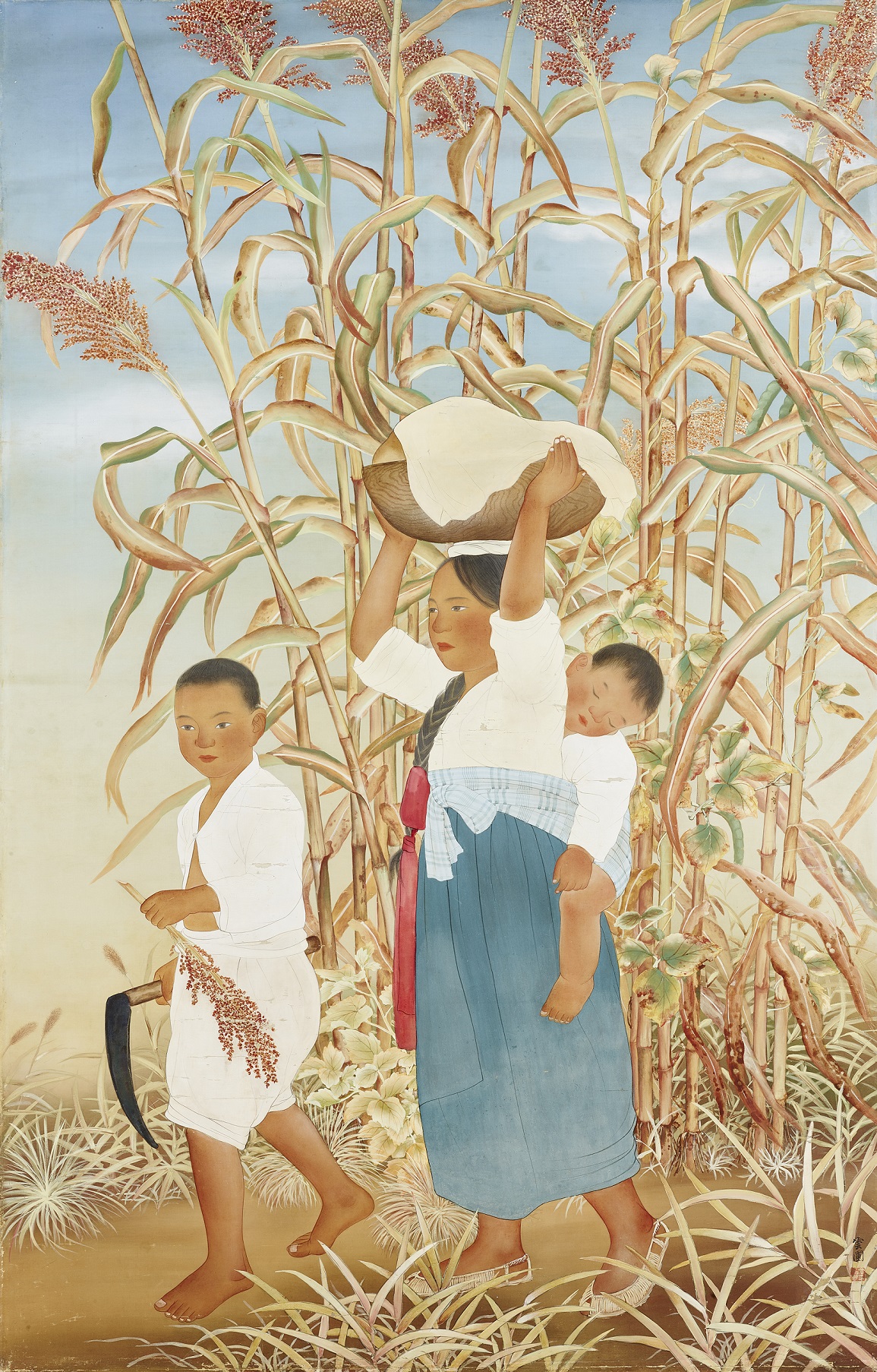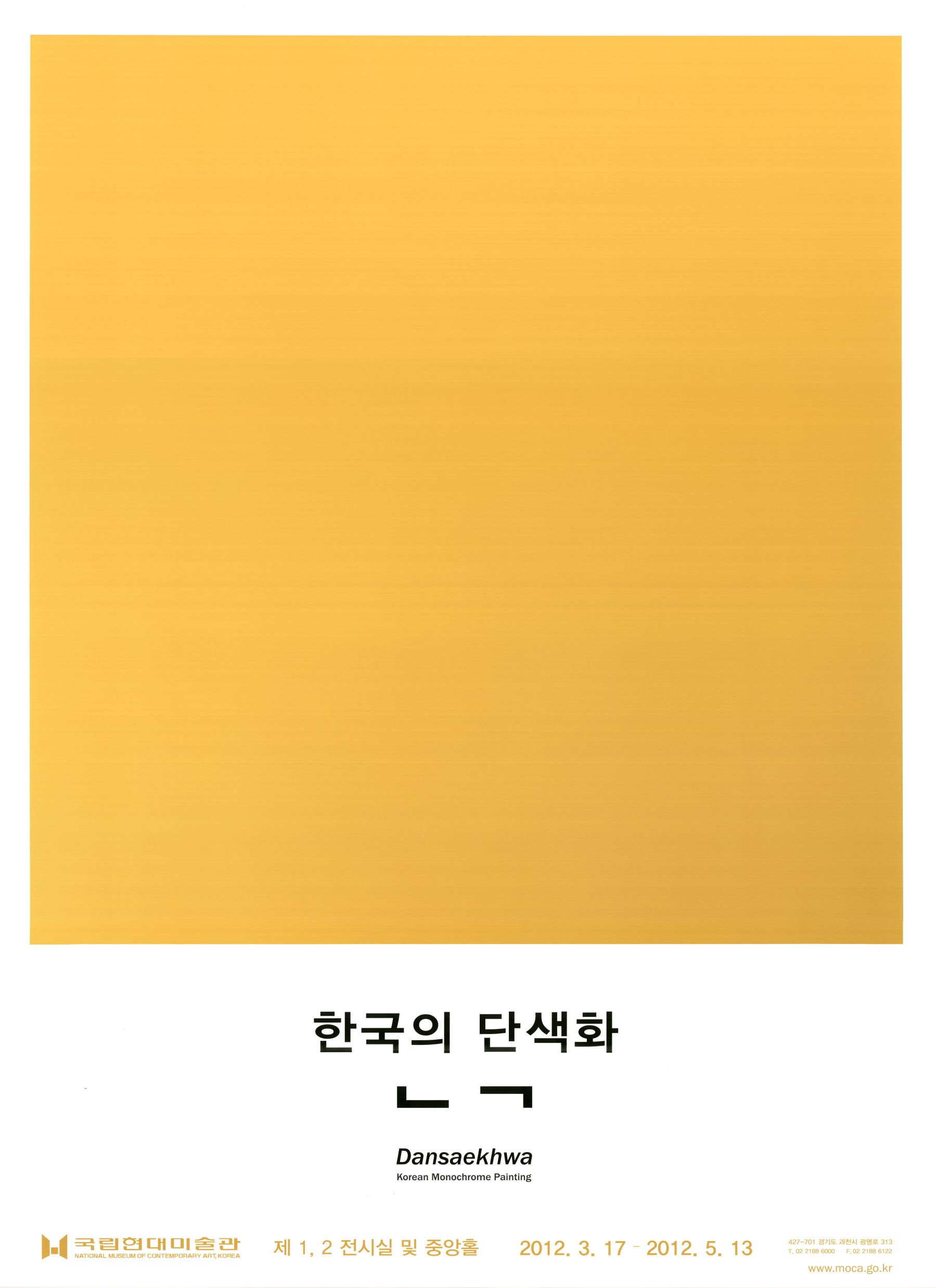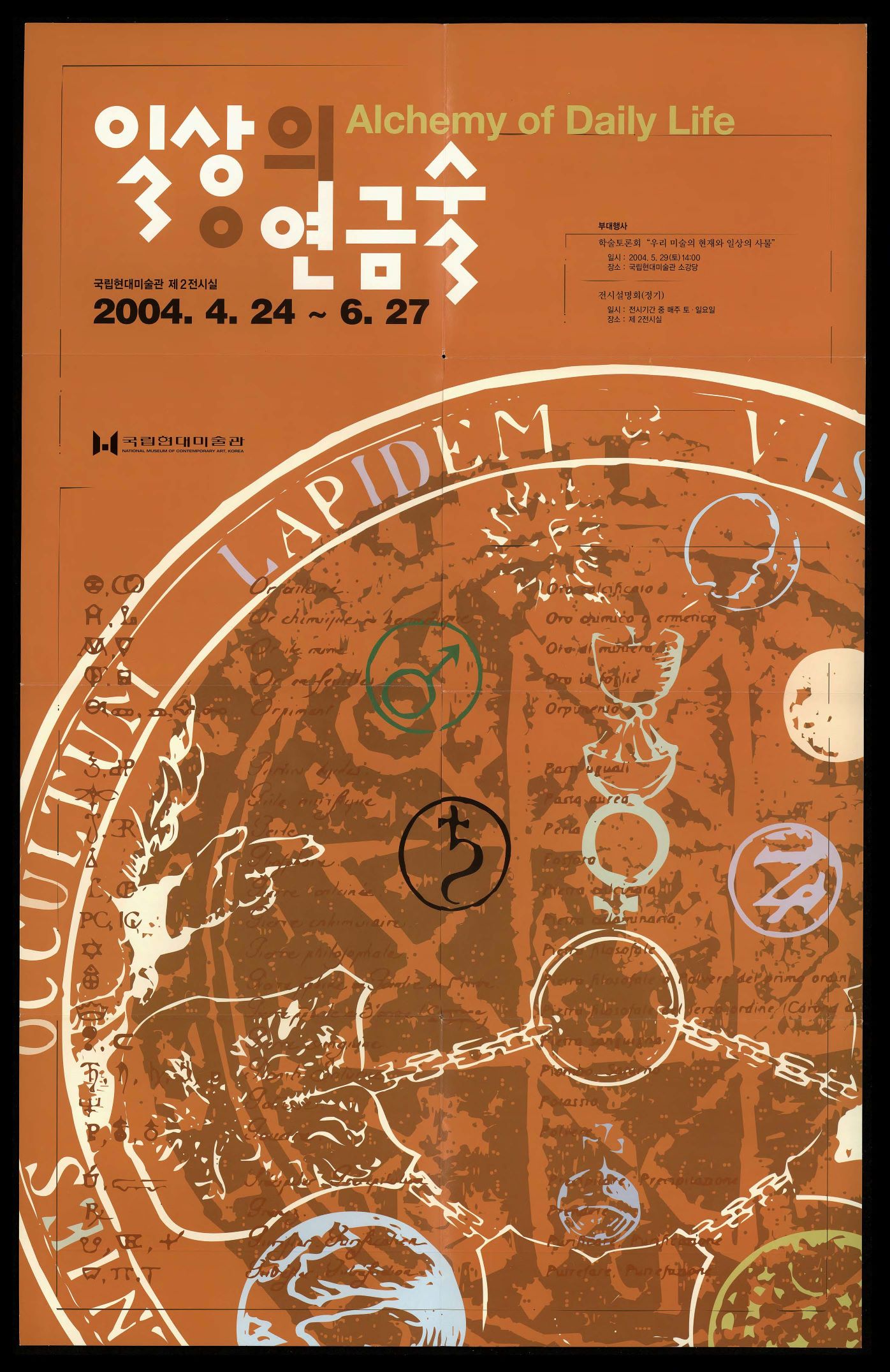
Cubism in Asia: Unbounded Dialogue, Poster, 2005, MMCA Art Research Center Collection
Cubism in Asia: Unbounded Dialogue
* Source: MMCA
Related
-

National Museum of Modern and Contemporary Art, Korea (MMCA)
A national museum established in 1969 that researches, collects, and exhibits modern and contemporary art. As of 2018, there are branches in Gwacheon, Deoksugung, Seoul, and Cheongju. When first established, the National Museum of Modern Art (now MMCA) was located within Gyeongbokgung palace. In 1973, the museum moved to the East Wing of the Deoksugung Seokjojeon building. Then, in 1986, the museum moved to its current location in Gwacheon, to occupy a new building equipped with an outdoor sculpture exhibition space, and has since opened a new chapter in Korean art. The perceived need for a space to focus specifically on Korean contemporary art led to the establishment of further site, the National Museum of Contemporary Art, Deoksugung in 1998. In November 2013, a further demand for contemporary art exhibitions led to the establishment of another Seoul branch being created in the Defense Security Command building in Sogyeok-dong, Jongno-gu, which has since its inception engaged in multifaceted exhibitions of both domestic and overseas contemporary art. Also, as a further component of the MMCA complex, a disused tobacco factory in Cheongju was remodeled to provide a home to the National Art Storage Center.
-

Kim Kichang
Kim Kichang (1913-2001, pen name Unpo or Unbo) studied Eastern painting at Kim Eunho’s art studio Nakcheongheon. After his debut in the tenth Joseon Art Exhibition [Joseon misul jeollamhoe] in 1931, he won special selections from 1937 to 1940, and became a renowned painter. He was appointed as the first president of Paek Yang Painting Association and became a professor at Hongik University and Soodo Women's Teachers College. He was awarded the Order of Civil Merit, Peony Medal in 1981 and the Korean Art Academy Award in 1983. After he passed away in 2001, he was awarded a posthumous Geumgwan Order of Culture Merit award. Although Kim initially focused on colorful figure paintings, following in the legacy of his mentor Kim Eunho, in his later career he collaborated with his wife Park Rehyun to modernize Korean painting by adopting cubism and abstraction. He reinterpreted traditional folk paintings in his representative works, such as Blue-green Landscape Painting series started in the 1970s and his Fool’s Landscape Painting in the 1980s and was inspired by portraits of historical figures. He contributed to the development of Korean modern art by working in an expanded formal territory from figuration to abstraction and addressing subject matter from folk painting, to figure and landscape painting.
-

Gu Bonung
Gu Bonung (1906-1953, pen name Seosan) was born in Seoul. He started his education in drawing at Gyeongsin Highschool. He learned sculpture from Kim Bokjin of Goryeo Art Studio [Goryeo misulwon] and then won an award for Self-Portrait at the Sixth Joseon Art Exhibition [Joseon misul jeollamhoe] in 1927. He attended Kawabata University Painting School in 1928 and studied at the Department of Aesthetics at Nihon University before graduating from the Taiheiyo Art School in 1933. He was selected for the Nikakai art exhibition in 1930. After returning to Korea, he participated in minor artists groups and non-govermental art associations, such as Mogilhoe Association and the White Savages Group [Baekmanhoe], instead of applying to the Joseon Art Exhibition. In his essay “Theory: War and Artist” (Maeil Sinbo, 1940.7.9.), he was accused of a Pro-Japanese bias after he encouraged artists to serve the Japanese empire. Immediately after independence, he worked as an editor of fine art in the Ministry of Culture and Education of the U.S. Army Military Government in Korea (USAMGIK) in Korea and was a part-time employee of the Seoul Sinmunsa Newspaper Press in 1949. His paintings illustrated a powerful decadent style based on a dissenting spirit and Fauvist Expressionism. In the mid-1930s, he began focusing on Oriental style oil painting.
Find More
-

Dansaekhwa: Korean Monochrome Painting
Dansaekhwa: Korean Monochrome Painting was an exhibition held at the National Museum of Contemporary Art (now MMCA) from March 17 to May 13 in 2012. The curator Yoon Jinsup brought together monochromatic paintings with a variety of senses and perspectives from the 1960s through the 2000s and beyond. The participating artists were Quac Insik, Kwon Youngwoo, Kim Guiline, Kim Jangsup, Kim Whanki, Park Seo-Bo, Suh Seungwon, Youn Myeungro, Yun Hyongkeun, Lee Dongyoub, Lee Ufan, Chung Sanghwa, Chung Changsup, Choi Myoungyoung, Choi Byungso, Ha Chonghyun, Hur Hwang, Koh Sankeum, Kim Tschoonsu, Kim Taeho, Kim Taeksang, Nam Tshunmo, Noh Sangkyoon, Moon Beom, Park Kiwon, An Jeongsuk, Lee Kangso, Lee Bae, Lee Inhyeon, Jang Seungtaik, and Cheon Kwangyeop. Perceiving tranquility, white clothes, and the sentiment of “han” (resentment or sorrow) as the “archetype” that forms the core of the collective unconscious of Koreans, Yun Jinseop interpreted the preference for Dansaekhwa (monochrome painting) as the identity of Koreans and curated the exhibition entitled Dansaekhwa: Korean Monochrome Painting. He viewed that the trend of Dansaekhwa was seen already in the 1960s works of Kim Whanki, Quac Insik, and Lee Ufan, but the official beginning of Korean Dansaekhwa originated from Lee Ufan and Yamamoto Takashi from Tokyo Gallery paying attention to Situation by Lee Dongyoub and Variable Consciousness by Hur Hwang, both of which were submitted to the first Independants in 1972. He also divided Dansaekhwa into early monochrome painting which emphasized the repetition of performances and actions in the 1970s, and late monochrome painting, which used various materials in and after the 1980s. This exhibition marked a turning point in the use of the term “Dansaekhwa.” In the 1970s, such paintings were called “monochrome” and later “monotone painting.” However, they came to be written using the proper noun Dansaekhwa. The use of the term Dansaekhwa spread quickly and became common, coinciding with the situation in which monochrome painting attracted international attention.
-

Alchemy of Daily Life
Alchemy of Daily Life was an exhibition held from April 24 to June 27 in 2004 in Gallery 2 of the National Museum of Contemporary Art, Korea (now MMCA). In the exhibition's preface, Kim Kyung-woon, the curator of the exhibition at the MMCA, said that "alchemy" is the process by which ordinary objects become extraordinary works of art through the imagination of artists, a concept that has captivated masters of modern art like Marcel Duchamp and Joseph Beuys. Also due to a change in how everyday objects are utilized as we transition from an industrial society to an information society, Kim opens up the possibility of interpreting efforts by artists, who sought to challenge the authority entrenched in false consciousness and raise objections against the status of high art, in relation to the social landscape of Korea. A total of twenty-three artists participated in the exhibition, including Kim Beom, Park Gye-hoon, Park Buldong, Ahn Kyuchul, Ahn Yun-Mo, Lee Jaehyo, Joo Jaehwan, Choi Jeonghwa, Ham Jin, Choi Jung-hyun, Kim Hongju, Kim Soojin, Kwon Youngwoo, Cho Sungmook, Chung Kyungyeun, Noh Sangkyoon, Lee In-Hee, Kim Siha, Kwon Jaehong, Lee Dongwook, Cho Byungwang, Choi Doosu, and Jeong Soyoun. As a side event, the academic discussion "The Present and Everyday Objects of Korean Art" was held on May 29 at the Small Auditorium of the MMCA. The exhibition was hosted by the MMCA, organized by the Christchurch Art Gallery Te Puna o Waiwhetū, New Zealand, and supported by the Korea Foundation. It was held from November 18, 2005 to February 26, 2006 at the Christchurch Art Gallery Touring Exhibition Room and the Borg Henry Exhibition Room. It was the first exhibition of Korean contemporary art to be presented in New Zealand.






